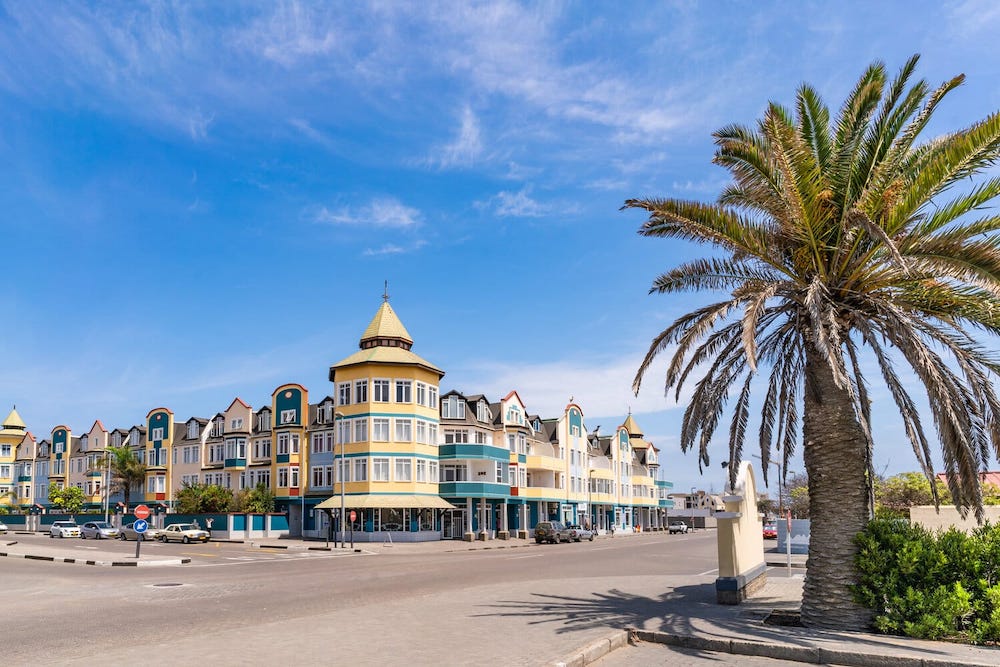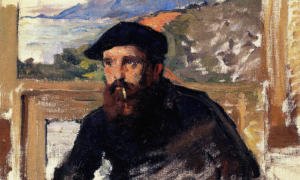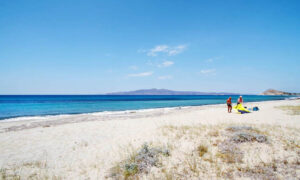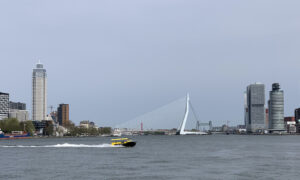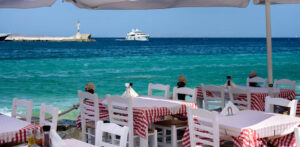Namibia was dubbed “Africa for beginners” by Lonely Planet, and I could not agree more. The locals are so friendly and respectful, the infrastructure is great, and it is a very safe country.
The common way to visit Namibia is to rent a car and drive yourself around, which, in my opinion, is much nicer than having a guide and having to stick to a specific programme. If you’re hella rich, you can also visit the country by plane, as most high-end hotels have an airstrip – if this appeals to you feel free to slide into my DMs, I’ll be more than happy to be your guide.
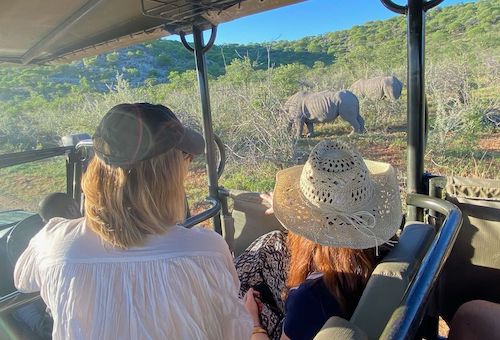
Anyways, back to Namibia: I went there for Christmas with my family, and we stayed six nights in total, which was quite an express trip to be honest. It’s doable, but I’d recommend staying a couple of weeks at least.
We rented a 4×4 and drove all around the country. The roads were mostly great, although there was quite a fair bit on dirt tracks. I would recommend renting a proper 4×4 and make sure you have a couple of spare wheels just in case.
Here is the itinerary we followed:

Day 1-2: Windhoek to Etosha National Park

After landing in Windhoek, the capital of Namibia, we immediately buckled up for a 5-hour-long journey and hit the road towards Etosha National Park – the African gem where wildlife parties around salt pans big enough to spot from space.
It’s like the animal kingdom’s version of a chic watering hole.
Etosha is not just your average reserve; it’s the epitome of accessibility, where even a sedan can strut its stuff through the park. The rest camps, complete with restaurants, viewing decks, shops, and petrol stations, are like luxury pit stops in the African savannah. You might be in the wild, but that doesn’t mean you have to rough it.
We also did a couple of safaris in the Ongava private reserve where we stayed, which is quite nice because there are less tourists and you can leave the tracks to get closer to the animals. Iit goes without saying that we always stayed at a respectful distance.)
And guess what?
Malaria decided to take a vacation too, leaving you to enjoy game sightings without swatting pesky mosquitoes, but scorpions and zebra snakes are still very much present so beware. (Don’t look up zebra snakes on Google, it’s scary.)
Day 3: Etosha to the Fish River Canyon
Leaving the wildlife behind, you’re off to the Fish River Canyon, which is about a 3-hour drive from Etosha. Stretching a whopping 160 kilometers long, up to 27 kilometers wide, and almost 550-meters deep, it is the largest canyon in Africa. Its name is deceptive though because the Fish River plays hard to get, flowing intermittently and transforming into a chain of pools the rest of the year.
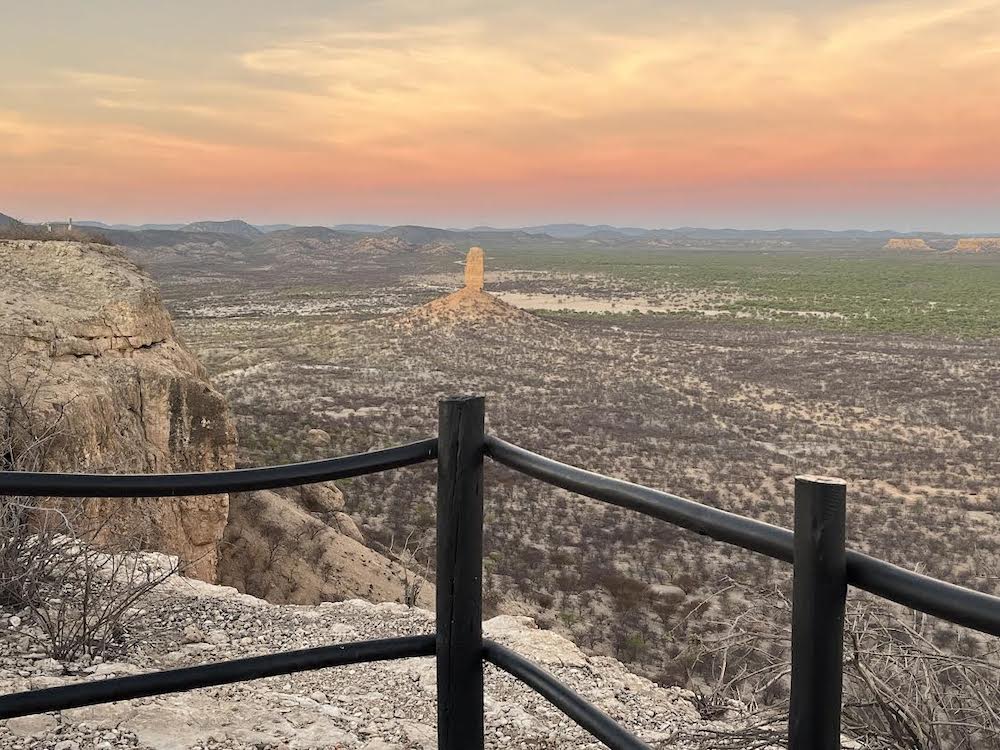
Along the way, witness the iconic Fingerklippe – a rocky pinnacle that’s like Namibia’s own version of a rockstar. Standing tall at 929 meters above sea level, this eroded masterpiece is the country’s most famous rock since the collapse of Mukurob.
This photo above is of the view of the restaurant of the Vingerklip Lodge where we stayed, I can’t recommend this place enough. It’s like nature’s version of a red carpet event, and you’re the VIP guest.
Day 4: Fish River Canyon to the Swakopmund – the CIA-designed wonderland
Drive for a little under five hours from the canyon to Swakopmund, a town that looks so fake it feels like it was built by the CIA. It’s like the setting for a spy movie with a dash of German colonial charm (cough cough).
The beach resort vibes and German architecture make you wonder if James Bond is sipping a cocktail at the Crystal Gallery. Activities like quad biking, camel rides and paragliding turn this seemingly undercover town into an adventure hotspot.
You can also go kayaking or sailing, and – depending on the season – there are plenty of flamingos. This town is located along the Skeleton Coast, and earned its ominous name due to the numerous shipwrecks and skeletal remains of marine life scattered along its desolate shores.
To be honest, this was not a great place to stop, but it was either that or a 10-hour drive. Ultimately, it’s always nice to see the sea and smell the sea spray, but please don’t spend too much time here.

Day 5-6: Skeleton Coast to the Red Dunes of the Namib Desert
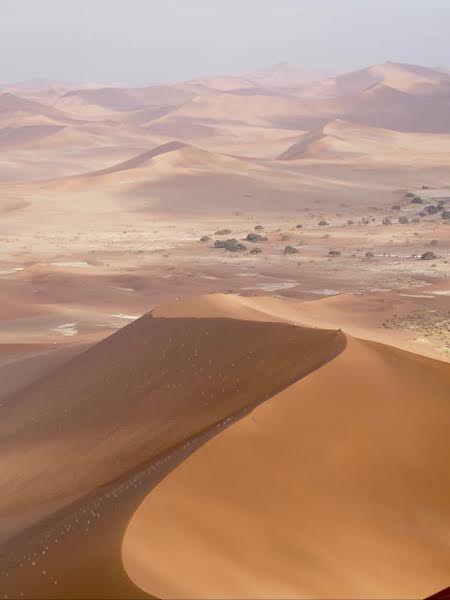
The grand finale takes you from this weird beach town to the towering dunes of the Namib Desert. Big Daddy, the tallest dune in Sossusvlei, is like the desert’s Everest. Scale its 325 meters for the ultimate bragging rights, looking down onto the surreal landscape of Deadvlei.
Deadvlei, adjacent to Sossusvlei, is a pan with dried, ancient acacia trees standing on the cracked white clay floor, creating a hauntingly beautiful contrast against the red dunes and blue sky. And while Big Daddy may steal the show, don’t forget to tip your hat to Dune 7, the true titan at 388 meters.
It’s like a dune duel, and you’re the spectator with the best seat in the house.
Climbing a sand dune is nature’s way of reminding you that Leg Day at the gym doesn’t quite prepare you for a workout in the desert. It’s like attempting an escalator made of shifting sand – a glorious struggle with the bonus challenge of looking fabulous covered in desert glitter afterward.
The view from the top is worth the struggle though, I promise.

Day 7: From Dunes to Downtown
We drove from the desert back to Windhoek, which took three hours instead of five. There is a shortcut that your GPS won’t suggest; ask a local and they’ll be able to explain to you which road you should take.
We walked around the capital, went to a local market, visited the Christuskirche, which is a staple in Windhoek. It is a red sandstone church, adorned with stained glass and a distinctive spire, whispers stories of Namibia’s history against the backdrop of modern Windhoek.
As you bid farewell to Namibia, you’ll leave with tales of salt pans seen from space, rock pinnacles that defy gravity, and a town that might just be hiding a secret agent or two, but more importantly, breath taking views that you will never forget.
This is not just a road trip – it’s a safari through the unexpected.
Safe travels, explorer-extraordinaire! And don’t forget to bring Oryx Desert Salt back to your friends; it was a big hit with mine, especially the tomato and herbs one.
You’re welcome.
PS: I told you not to look up zebra snakes!
–––––––––––
Read more about Africa here and here in Dispatches’ archives
Charlotte Laborie grew up in England, Belgium and Switzerland. Charlotte then moved to Paris and graduated from Sciences Po Paris. She is still based in Paris, where she works in marketing.



